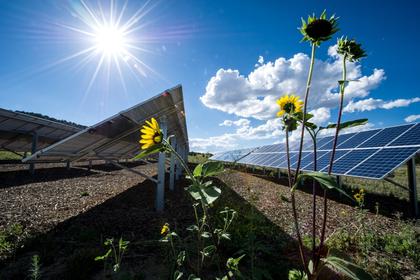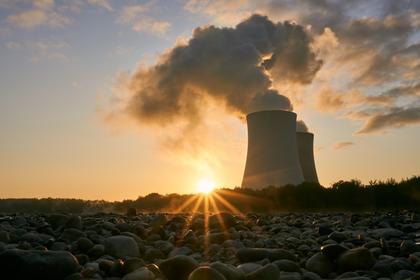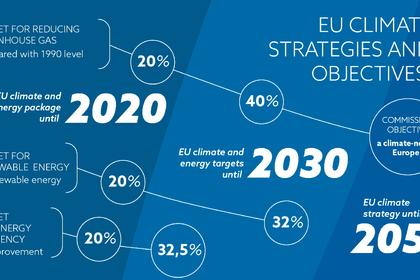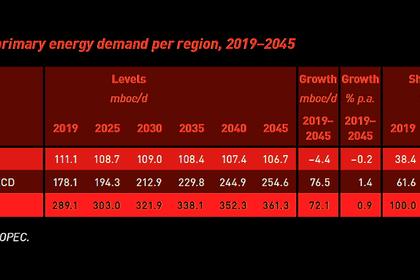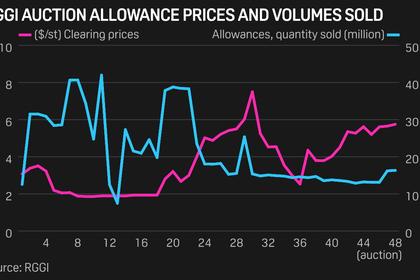
NOOLOGISTIC ACCOUNTING OF ENVIRONMENTAL IMPACTS

Introduction
As you know, the ultimate objective of all agreements under the UNFCCC is to stabilize greenhouse gas concentrations in the atmosphere at a level that will prevent dangerous human interference with the climate system, in a time frame which allows ecosystems to adapt naturally and enables sustainable development. Noologistic Accounting of Environmental Impacts (NAEI) provides information to manage the process towards achieving this goal.
The word “Noologistic” in the name NAEI comes from the ancient Greek words νόος – “noo” (reasonable) and logitsich – “logistics” (art of counting). It consists of many usual accounting transactions.
NAEI is a part of Noologistic Control Technology. Its implementation will provide individuals, households, communities and politicians with complete, objective and reliable information about the impact of their activities on the environment for the development and implementation of daily decisions about consumption, lifestyle and investment. Strategically, NAEI’s implementation provides for the first creation of a global low-carbon economy, and then the transition from it to a global eco-economy. NAEI’s features require the achievement of international agreements.
The NAEI is redefining the concept of clean technology, such as in the energy sector. Many of them, when calculated in detail, turn out to be environmentally dirty.
Concept
Currently, there is no scientifically based system in the world to collect and provide individuals, households and communities with complete and objective information about the impact of their activities on the global CO2 balance. This circumstance is fraught with their ineffective and erroneous decisions and actions. For example, in modern energy, a decision was made to switch to the so-called. “Carbon Free” technologies because there is practically no CO2 emission in the place of their use. This decision was made without sufficient environmental justification because it does not take CO2 emissions into account when manufacturing equipment for “Carbon Free” technologies, its delivery, installation, commissioning, etc. NAEI provides scientifically sound, complete and objective accounting of all types of CO2 emissions and the provision of relevant information to individuals, households and communities.
NAEI divides all types of CO2 emissions into two categories: conditionally constant and conditionally variable.
Conditionally constant СО2 emission is one the value of which does not change or change slightly under the change in the results of main activities of individuals, households and communities, for example, on the change in the volume of their production. It includes:
- depreciation of emissions from preparation for core activities, including the construction of buildings, structures, equipment manufacturing, its transport to the place of operation, installation, commissioning, etc.;
- depreciation of emissions from the disposal of buildings, structures, equipment, etc.;
- emissions from general household activities that support the core activity;
- depreciation of other emission (partially).
A conditionally variable CO2 emission is one, the value of which is directly related to the results of the main activities of individuals, households and communities, for example, the volume of production and sale of products by them. It includes:
- CO2 emissions directly from the technological process of the main activity, for example, directly from operating generators;
- CO2 emissions, taken into account in the manufacture and delivery of raw materials, materials, purchased semi-finished products and components;
- CO2 emissions taken into account in the production of fuel and energy for technological purposes;
- СО2 emissions taken into account during the maintenance and operation of machinery and equipment, with the exception of the depreciation of emissions taken into account in their manufacture, etc.
As a criterion for globally significant CO2 emissions, the NAEI takes the sum of conditionally constant and conditionally variable emissions over a certain period of time, as well as the average emission per unit of output. The best option for solving any control problem will be the one that has the least value of the mentioned criteria.
Methodology
The general NAEI methodology is borrowed from the accounting of economics. Below is an example of preparing information for making a management decision and its application.
The task of example
Choose a generator project with a capacity (Nn) of 0.8 * 106 kW and the lowest total CO2 emissions.
Accounting data formation
A) Make a list of ith compared types of generators.
For example:
i = 1 – a generator with a Diesel drive (hereinafter - D),
i = 2 – a generator with a gas turbine engine (hereinafter - GTE),
i = 3 – a generator with a drive from a steam-gas turbine installation (hereinafter - SGTI),
i = 4 - a generator driven by a water turbine (HPS),
i = 5 - a generator driven by a wind turbine (hereinafter - W),
i = 6 - a generator with a solar energy photo converter (hereinafter - S).
Record the symbols of the compared generators in table No. 1 (see below). Record the symbols of the compared generators in table No. 1 (see below).
B) Make a list of jth types of conditionally constant CO2 emissions related to the use of ith compared types of generators.
For example:
j = 1 - CO2 emissions taken into account during the construction of buildings and structures (hereinafter - Qci1);
j = 2 - СО2 emission taken into account when manufacturing equipment (hereinafter - Qci2);
j = 3 - СО2 emission taken into account during general household activity (hereinafter - Vci3);
j = 4 - СО2 emission, taken into account when maintaining the administration (hereinafter - Vci4);
j = 5 - СО2 emission taken into account during utilization (hereinafter - Qci5), etc.
Record the list of jth types of conditionally constant CO2 emissions in table No. 1.
C) Make a list of kth types of conditionally variable CO2 emissions during the operation of ith compared types of generators.
For example:
k = 1 – CO2 emissions directly from operating generators (hereinafter – Evi1);
k = 2 – СО2 emissions taken into account in the production of fuel and energy resources (hereinafter – Evi2);
k = 3 – CO2 emission taken into account in the production of fuel and energy for technological purposes (hereinafter – Evi3);
k = 4 – СО2 emission, taken into account during the maintenance and operation of machinery and equipment (hereinafter – Evi4), etc.
Record the list of kth types of conditionally variable CO2 emissions in table No. 1.
D) Collect information on the values of jth types of conditionally constant CO2 emissions into the environment (Qci1, Qci2, Vci3, Vci4 and Qci5), directly related to the use of ith compared types of generators.
To collect this information, use any known method that will provide sufficient accuracy in its use. It will be automatically generated for all activities of individuals, households and communities when the widespread implementation of NAEI. It will become the basis of the environmental part of each project, similar to its economic part.
The values of the conditionally constant CO2 emission collected as a result of this operation are recorded in Table No. 1.
E) Collect information on the values of the kth types of conditionally variable CO2 emissions into the environment (Evi1, Evi2, Evi3 and Evi4) from the compared ith types of generators at their work.
To collect this information, use any known method that will provide sufficient accuracy in its use. The best way to collect it is to use special automatic systems equipped with flow sensors and gas analyzers.
These values are recorded in table No. 1.
F) Collect information about the nameplate capacity of each ith generator – Ni, its nameplate working resource Ti, useful lives of buildings and structures – Ui and record to the Table No. 1.
Table No. 1
|
Name of accounting data |
Symbol |
Unit |
Type of generator (its i and symbol) |
||||||
|
1 D |
2 GTE |
3 SGTI |
4 HPS |
5 W |
6 S |
||||
|
C. constant emission (its j and name) |
1 – into construction of buildings and structures |
Qci1 |
ton / pc |
137.07 |
3954 |
377550 |
43361491 |
30.37 |
30.81 |
|
2 – due manufacturing equipment |
Qci2 |
ton / pc |
319.83 |
9226 |
880950 |
86723347 |
70.87 |
71.89 |
|
|
3 – from general household activity |
Vci3 |
ton / year |
1.791 |
13.839 |
70.476 |
65 |
1.417 |
1.438 |
|
|
4 – maintaining the administration |
Vci4 |
ton / year |
0.896 |
6.9195 |
35.238 |
36.74 |
0.9449 |
0.9585 |
|
|
5 – due utilization |
Qci5 |
ton / pc |
113.5 |
2082.3 |
7707.1 |
30353171 |
24.448 |
26.726 |
|
|
C. variable emission (its k and name) |
1 – from generator |
Evi1 |
kg / kWh |
0.78 |
0.81 |
0.756 |
0 |
0 |
0 |
|
2 – into materials and components |
Evi2 |
kg / kWh |
0.0006 |
0.00015 |
0.00045 |
0.00035 |
0.0007 |
0.0001 |
|
|
3 - into fuel and energy resources |
Evi3 |
kg / kWh |
0.0066 |
0.00165 |
0.00495 |
0 |
0 |
0 |
|
|
4 - due maintenance equipment |
Evi4 |
kg / kWh |
0.0048 |
0.0012 |
0.0036 |
0.00665 |
0.0133 |
0.0019 |
|
|
Nameplate capacity |
Ni |
kW |
120 |
16000 |
800000 |
1200000 |
3 |
3 |
|
|
Nameplate working resource |
Ti |
year |
10 |
12 |
12 |
15 |
6 |
6 |
|
|
Useful life |
Ui |
year |
25 |
25 |
38 |
50 |
6 |
6 |
|
All conventions in table 1 - see above.
The accounting data generated in Table No. 1 contain complete and objective information for choosing the best type of generator. Their application will provide the opportunity to accurately and justifiably choose a generator with the required power and lowest total globally significant CO2 emission into the environment.
Currently, it is generally accepted that the best are generators that have zero local CO2 emissions, i.e. their conditionally variable emission is zero (Ev41 = 0 kg / kWh, Ev51 = 0 kg / kWh and Ev61 = 0 kg / kWh). These types of generators are highlighted in green in Table No. 1. And the worst one is in red.
A simplified calculation technology using accounting data from Table No. 1 to provide the best choice is shown below.
Calculation the choose criterions
A) Calculate the number of generators of each ith type according to the formula:
NGi = Nn / Ni, pcs. (1)
All symbols in the formula (1) - see above.
An example of calculation according to formula (1) of the number of generators with a Diesel engine when rounding the result up to an integer:
NG1 = Nn / N1 = 0.8*106 / 120 = 6667 pcs.
B) Calculate the depreciation of conditionally constant CO2 emissions during the construction of buildings and structures for each ith generator type according to the formula:
Aci1 = Qci1 / Ui, ton / year. (2)
All symbols in the formula (2) - see above. Calculation example according to formula (2) for a generator with a Diesel engine:
Ac11 = Qc11 / U1 = 137.07 / 25 = 5.483 ton / year.
C) Calculate the depreciation of conditionally constant CO2 emissions during the construction of buildings and structures for each ith generator according to the formula:
Aci2 = Qci2 / Ti, ton / year. (3)
Aci5 = Qci5 / Ti, ton / year. (4)
All symbols in the formulas (3) and (4) - see above. Calculation example according to formulas (3) and (4) for a generator with a Diesel engine:
Ac12 = Qc12 / T1 = 319.83 / 10 = 31.98 ton / year.
Ac15 = Qc15 / T1 = 113.5 / 10 = 11.35 ton / year.
D) Calculate the average total value of the conditionally constant CO2 emission for generator of the ith type according to the formula:
Eci = (Aci1 + Aci2 + Vci3 + Vci3 + Aci5) * 1000 / 365*24 * Ni, kg / kWh. (5)
The coefficients used in the formula (5): 1000 - the number of kilograms per ton, 365 - the number of days in a year, 24 - the number of hours in a day.
All symbols in the formula (5) - see above.
Calculation example according to formula (5) for a generator with a Diesel engine:
Ec1 = (Ac11 + Ac12 + Vc13 + Vc13 + Ac15) * 1000 / 365*24 * Ni = (5.483 + 31.98 + 1.791 + 0.896 + 11.35) * 1000 / 365*24 * 120 = 0.049 kg / kWh.
E) Calculate the average total value of the conditionally variable CO2 emission for generator of the ith type according to the formula:
Evi = Evi1 + Evi2 + Evi3 + Evi3, kg / kWh. (6)
All symbols in the formula (6) - see above. Calculation example according to formula (6) for a generator with a Diesel engine: Evi = Evi1 + Evi2 + Evi3 + Evi3 = 0.78 + 0.0006 + 0.0066 + 0.0048 = 0.792 kg / kWh.
F) Calculate the average total value of the conditionally variable CO2 emission for generator of the ith type according to the formula:
Eti = Eci + Evi, kg / kWh. (7)
All symbols in the formula (7) - see above. Calculation example according to formula (7) for a generator with a Diesel engine: Et1 = Ec1 + Ev1 = 0.049 + 0.792 = 0.841 kg / kWh.
G) Calculate the cost of a possible erroneous decision when choosing the type of generator through the value of the average emission according to the formula:
DEtin = Etin - |Etin|min, kg / kWh. (8)
In which the symbol |Etin|min corresponds to the value Et3n = 0.777kg / kWh in table No. 2, the rest - see above.
Calculation example according to formula (8) for a generator with a Diesel engine:
DEt1n = Et1n - |Etin|min = 0.841 – 0.777= 0.064kg / kWh.
H) Calculate the total value of the conditionally constant CO2 emission for all generators of the ith type, providing all the needs of the community, according to the formula:
Qcin = Eci * Nn / 1000, ton / h. (9)
All symbols and coefficient 1000 in the formula (9) - see above.
Calculation example according to formula (9) for a generator with a Diesel engine:
Qc1n = Ec1 * Nn / 1000 = 0.049 * 0.8 * 106 / 1000 = 39.2 ton / h.
I) Calculate the total value of the conditionally variable CO2 emission for all generators of the ith type, providing all the needs of the community, according to the formula:
Qvin = Evi * Nn / 1000, ton / h. (10)
All symbols in the formula (10) - see above. Calculation example according to formula (10) for a generator with a Diesel engine: Qv1n = Ev1 * NG1 = 0.792 * 0.8 * 106 / 1000 = 633.6 ton / h.
J) Calculate the total value of the conditionally variable CO2 emission for all generators of the ith type generators while meeting community needs according to the formula:
Qti = Qci + Qvi, ton / h. (11)
All symbols in the formula (11) - see above. Calculation example according to formula (11) for a generator with a Diesel engine: Qt1 = Qc1 + Qv1 = 39.2 + 633.6 = 672.8 ton / h.
K) Calculate the cost of a possible erroneous decision when choosing the type of generator.
The cost of a possible erroneous decision when choosing the type of generator is calculated as the difference between all the values of the total CO2 emissions into the environment and the smallest of them according to the formula:
DQtin = Qtin - |Qtin|min, ton / h, (12)
In which the symbol |Etin|min corresponds to the minimum value Qtin of all its values in table No. 2, the rest - see above.
Calculation example according to formula (12) for a generator with a Diesel engine:
DQt1n = Qt1n - |Qtin|min = 672.8 – 621.6= 51.2ton / h.
Calculations for other generators by the formulas (1) … (12) are performed similarly, and their results are recorded in Table No. 2.
Table No. 2
|
Name of accounted data |
Symbol |
Unit |
Type of generator (its i and symbol) |
|||||
|
1 D |
2 GTE |
3 SGTI |
4 HPS |
5 W |
6 S |
|||
|
Number of generators |
NGi |
pc |
6667 |
50 |
1 |
1 |
266667 |
266667 |
|
Depreciation of Qci1 |
Aci1 |
ton / year |
5.483 |
158.16 |
9935.5 |
867230 |
5.062 |
5.135 |
|
Depreciation of Qci2 |
Aci2 |
ton / year |
31.98 |
768.83 |
73413 |
5781556 |
11.811 |
11.982 |
|
Depreciation of Qci5 |
Aci5 |
ton / year |
11.35 |
173.53 |
642.26 |
2023545 |
4.0747 |
4.4543 |
|
Average conditionally constant CO2 emission for ith generator |
Eci |
kg / kWh |
0.049 |
0.008 |
0.012 |
0.825 |
0.887 |
0.912 |
|
Average conditionally variable CO2 emission for ith generator |
Evi |
kg / kWh |
0.792 |
0.813 |
0.765 |
0.007 |
0.014 |
0.002 |
|
Total average CO2 emission for ith generator |
Eti |
kg / kWh |
0.841 |
0.821 |
0.777 |
0.832 |
0.901 |
0.914 |
|
A cost of a possible erroneous decision through the Eti |
DEti |
kg / kWh |
0.064 |
0.044 |
0 |
0.055 |
0.124 |
0.137 |
|
A conditionally constant CO2 emission for all ith generators |
Qcin |
ton / h |
39.2 |
6.4 |
9.6 |
660 |
709.6 |
729.6 |
|
A conditionally variable CO2 emission for all ith generators |
Qvin |
ton / h |
633.6 |
650.4 |
612 |
5.6 |
11.2 |
1.6 |
|
A total CO2 emission for all ith generators |
Qtn |
ton / h |
672.8 |
656.8 |
621.6 |
665.6 |
720.8 |
731.2 |
|
A cost of a possible erroneous decision through the Qtn |
DQtn |
ton / h |
51.2 |
35.2 |
0 |
44 |
99.2 |
109.6 |
All conventions in table 2 - see above.
Development of a management decision
A) The most “clean” generator has the smallest value of the total CO2 emission.
A comparison of the calculation results in Table No. 2 shows that the most “clean” generator in the considered example is SGTI, which has Et3n = 0.777kg / kWh and Qt3n = 621.6 ton / h, and the most “dirty” one is S, which has Et6n = 0.914kg / kWh and Qt6n = 731.2 ton / h.
The calculation results, which are given in Table No. 2, apply only to a specific project. Any change in the manufacturing, transport, installation, commissioning, repair and disposal of generators, as well as in the production and transportation of fuel and consumables for them, can significantly change the ratio between Etin and Qtin.
Conclusions
Obviously, NAEI can be applied to any activity and any production. It is also obvious that NAEI may be used not only for CO2 emission, but also for any toxic substance (mercury, organophosphorus compounds, etc.), irritating substance (acid, alkali, etc.), sensitizing substance (aldehyde, solvent, etc.), carcinogenic substance (asbestos, arsenic, etc.), mutagenic substance (lead, manganese, etc.), industrial dust of any origin, electric fields, radiation (electromagnetic, acoustic, infrared, etc.), etc. In addition, all of the listed types of impacts can be replaced by one universal generalizing impact, the value of which is calculated according to the current rules of environmental protection, for example, according to the relevant law.
The implementation of the project provides an opportunity for individuals, households and communities to manage CO2 emissions in any of their activities in the same way that they manage their costs in the economy. NAEI gives them and other interested parties the opportunity to calculate CO2 emissions in the manufacture, delivery, installation, commissioning, etc. of any item, product, service, process operation, etc. Costing results for CO2 emissions can be shown next to costing results for their respective costs. This information gives the environmental sense to the decisions and actions of individuals, households and communities in the consumption, production, renovation, stocks, etc. They will be able to accompany their projects not only with economic calculations on the ratio of revenues, expenses and profits from their implementation, but also with the calculation of the magnitude of the globally significant emissions, changes in the global CO2 balance from projects implementation and substantiation of their necessity from this side. It will allow us to comprehend the fact that people get the goods and profit from economy differently but CO2 emissions from them go equally to all people and their future generations too. It will become indecent to produce, acquire and demonstrate prestigious, but rarely used items with a large amount of emission near their price. The application of NAEI will be determined by laws and standards that will regulate the production and consumption of goods and services in order to minimize CO2 emissions.
For the first time, NAEI provides the technical ability to accurately select equipment for the accepted development option of any industry, including: option 1 - in the direction of decreasing the amount of СО2 emission under a given compromise between the values of production and profit; option 2 - in the direction of increasing production under a given compromise between profit and emissions; option 3 - in the direction of increasing profits under a given compromise between the values of production and emissions. In addition, the project provides for the transition from Real-Time Optimal Control to Extreme Control at Current Moment in time. This means that individuals, households and communities get the technical ability to manage their processes at current moment in time with either a minimum total global emission, or maximum production, or maximum profit under a given compromise between the other values. NAEI also provides for the first time (when applied globally) the ability to calculate the current global CO2 emissions into the environment, take into account the global CO2 content in it and manage their values at current moment in time.
-----
Authors
Vladimir V. Matveev
Director of NCT project,
mob. tel.: +79114524562 (Viber, WatsApp), e-mail: wwmatveev@gmail.com;
site: www.noologistics.ru
Valery V. Matveev
Vice Director for R&D of NCT project,
mob. tel.: +48519792559 (WatsApp), e-mail: ELP_Matveev@wp.pl ,
site: www.noologistics.ru
-----
Earlier:
